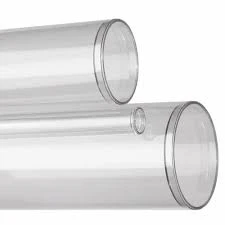Nov . 30, 2024 19:33 Back to list
hdpe pipe fitting
HDPE Pipe Fitting A Comprehensive Insight
High-Density Polyethylene (HDPE) pipe fittings have gained immense popularity in various industries due to their superior properties and versatility. These fittings play a crucial role in the construction of pipelines used for water supply, sewage, gas, and more. Understanding the characteristics, benefits, and applications of HDPE pipe fittings is essential for anyone involved in plumbing, construction, or even environmental management.
What is HDPE?
High-Density Polyethylene (HDPE) is a thermoplastic polymer known for its high strength-to-density ratio. Produced from petroleum, HDPE is lightweight yet sturdy, resistant to impact and environmental stressors. With a melting point exceeding 120°C, HDPE maintains its structural integrity across various temperatures. Its impressive tensile strength and flexibility make it an ideal choice for pipe fittings.
Characteristics of HDPE Pipe Fitting
1. Durability HDPE pipe fittings are known for their exceptional durability. They resist chemical corrosion, UV radiation, and physical wear and tear, ensuring a long lifespan exceeding 50 years under proper conditions.
2. Resistance to Leaks The fittings can be fused together, creating a strong, leak-proof joint that minimizes potential water loss. This fusion process enhances the integrity of the pipeline system.
3. Lightweight Compared to traditional materials like steel or iron, HDPE is significantly lighter, allowing for easier handling and installation. This characteristic reduces transportation costs and labor time.
4. Flexibility HDPE is adaptable and can be installed in versatile environments, including areas subject to ground movement. Its flexibility helps prevent fractures that might occur in rigid materials.
5. Environmental Impact HDPE is fully recyclable, contributing to sustainability in pipeline projects. The production process for HDPE results in lower carbon emissions compared to traditional materials, making it an eco-friendly option.
Benefits of Using HDPE Pipe Fitting
hdpe pipe fitting

1. Cost-Effective While the initial cost might be higher than other materials, the long-term savings in maintenance and replacement costs make HDPE a financially viable solution. Its durability translates into fewer replacements and repairs.
2. Easy Installation The lightweight nature of HDPE fittings allows for simpler installation processes. Installation can often be completed in a shorter timeframe, reducing labor costs.
3. Versatility HDPE pipe fittings can be utilized in various applications, including agricultural irrigation, municipal water supply, sewage systems, and industrial processes. They can accommodate a range of temperatures and pressures, making them suitable for different settings.
4. Reduced Maintenance Thanks to their resistance to corrosion and degradation, HDPE fittings require minimal maintenance. This translates to lower long-term operational costs.
Applications of HDPE Pipe Fitting
- Water Supply Systems HDPE fittings are widely used in municipal water distribution systems due to their ability to withstand high pressure and resist contamination.
- Sewage and Drainage The smooth inner surfaces of HDPE fittings reduce friction loss and allow for efficient flow in drainage systems.
- Gas Distribution HDPE is used for gas pipelines, where its resistance to corrosive soil conditions is paramount for safety and effectiveness.
- Irrigation Systems The agricultural sector utilizes HDPE fittings for irrigation due to their ease of installation and ability to handle varying water pressures.
Conclusion
HDPE pipe fittings are a modern solution that addresses many challenges faced in pipeline construction and maintenance. Their durability, flexibility, and resistance to chemicals make them a superior choice in various applications. As global industries move toward more sustainable practices, the advantages of HDPE fittings will continue to promote their adoption. Whether for municipal water systems, sewage management, agricultural needs, or gas distribution, HDPE pipe fittings represent a reliable and efficient choice for present and future infrastructural needs. As the technology and production methodologies continue to advance, we can expect even greater innovations in the field of HDPE fittings, further solidifying their place as essential components in modern pipeline systems.
-
Premium Glossy PP Rigid Sheet – Durable & Versatile
NewsAug.07,2025
-
High-Quality HDPE Sheet | Durable Plastic Panels
NewsAug.06,2025
-
High-Precision PVC Rigid Sheets for Vacuum Forming | AI-Optimized
NewsAug.05,2025
-
Durable PVC-M Water Supply Pipes | 60-Year Life
NewsAug.04,2025
-
Premium HDPE Water Supply Pipes: Durable & Leak-Proof
NewsAug.03,2025
-
Premium PVC-M Water Supply Pipe - Durable & Efficient
NewsAug.02,2025

